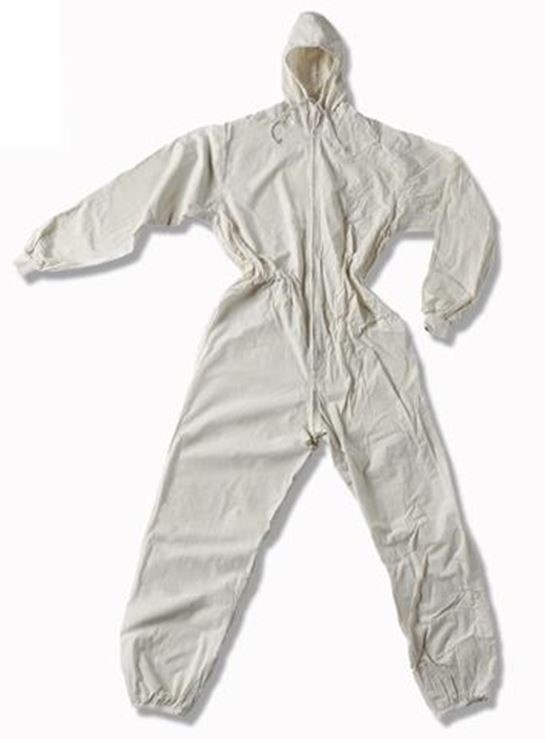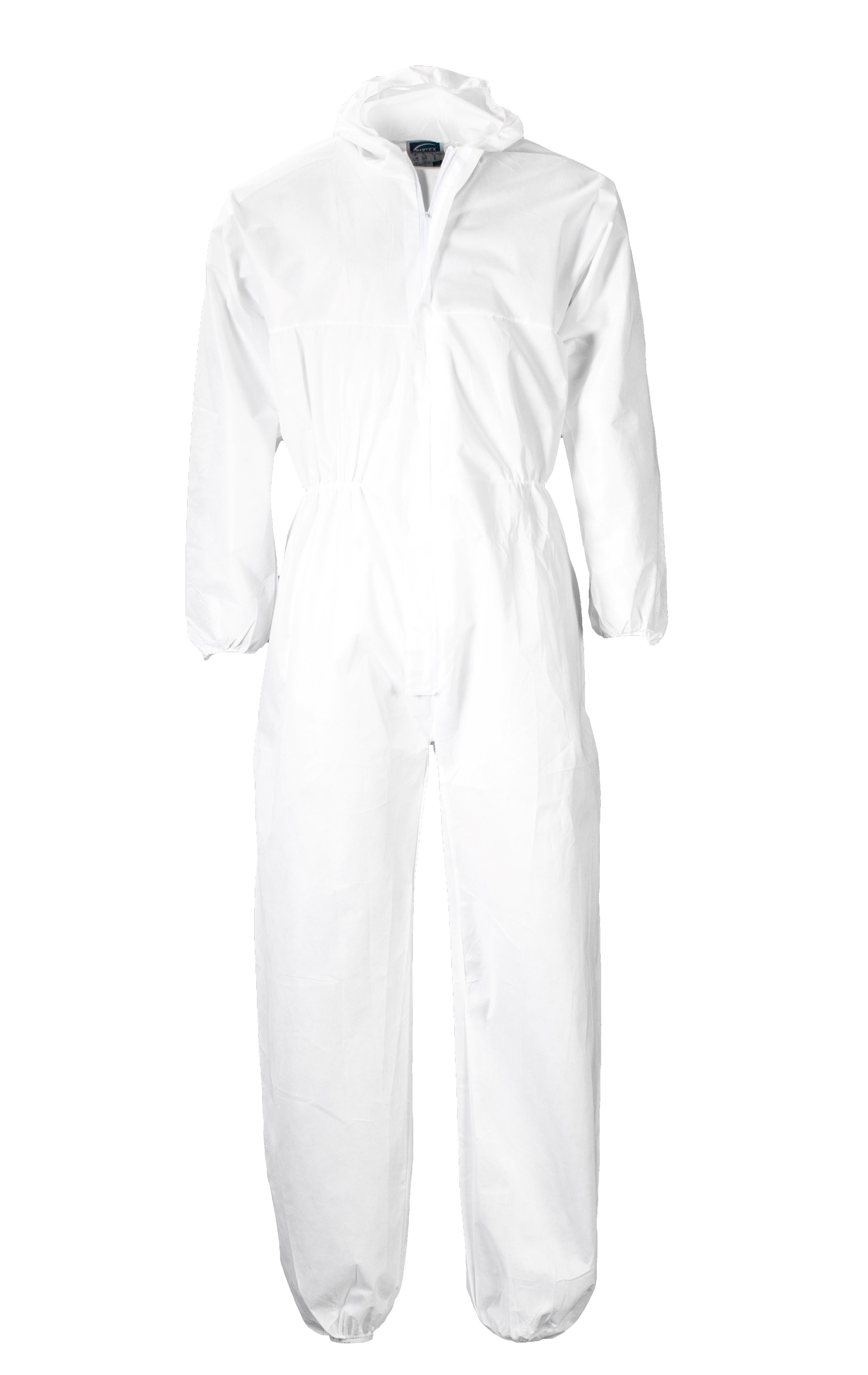Protective and coveralls are used in many industries. There can be many reasons why protective clothing should be used. From nature's side, it is our skin that protects the body, but in this modern age, man has developed a large number of substances that the skin alone cannot withstand.
Some substances are absorbed through the skin, while others are absorbed by ingestion or inhalation.
Although substances are not necessarily absorbed through the skin, a protective suit may still be useful, as some substances are difficult to wash off, or may cause burning and/or itching. Before work with chemicals begins, it is important to assess which conditions should be taken. This is best done by reading the data sheet point 8, where information about personal protective equipment is available.
SUITS:
There are different types of suits which are supplied in different material types such as cotton, polyethylene or polypropylene. The suits are often very easy to put on and take off, with zips and elastic at the ankles, wrists and hood. Some suits are partially breathable, but not the chemical suits with a special coating.
Examples of some of our popular products:
Overalls:
Coveralls offer no protection, often this type of suit only protects against dust particles, so the clothes do not get dirty. Coveralls can be used several times.
Chemical suits:
Chemical suits come in many different types. These suits are divided into types which are categorized from 1 - 6, where 1 provides the best protection. Chemical suits can only be used once, regardless of price and type.
MATERIALS:
Different materials provide different types of protection. The various material types are reviewed below.
Woven
A woven material, due to the structure of the metered product, is not very protective, as there are quite a few holes
and leaks between the structured fibers. Therefore, this material is not suitable for protective suits.
Non-woven (Non-woven)
In contrast to woven material, where the fibers are structured, the fibers in non-woven material are completely unstructured, but distributed so that the material is uniform. This means that the fibers lie closer and thus provide better protection. Therefore, most of the yardage used for protective suits is non-woven material.
The fibers are to a greater or lesser extent welded together, so that they form a dense product per metre.
PP (Polypropylene)
PP is a polymer that can also be formed into fibers that can be used for clothing and hygiene items. PP used for clothing is made of non-woven material that does not absorb moisture, but instead transports moisture away from the body.
PP will typically not be approved as a material for a Category 3 approved protective suit.
Disposable items, on the other hand, can often be made of PP if these disposable items are only used to protect against dirt and grime. PP is available in a multitude of grades and grams.
SMS
SMS stands for Spunbond Meltblown Spunbond polypropylene. This product by the meter consists of three layers, where in the middle it consists of approx. 0.1 mm structure of fiber which is fused together into a relatively dense structure. It is the middle layer that forms the barrier in the material. The middle layer is protected by a layer of Spunbond PP on each side.
Clothing manufactured in SMS is suitable for protection against certain particles. Suits made of this material are often comfortable and have great breathability in terms of the "leaky" structure.
The outer surface of the suits is not smooth and/or repellent, which means that liquid can penetrate and particles can stick to the suit.
MF
MF is a 2-layer product by the meter, which has a protective material of microporous polyethylene film (MF) of approx. 0.006 - 0.020 mm. The film is coated on a support layer of non-woven fibers. The suit is smooth on the upper side, which prevents particles and liquid from settling and penetrating through the material. The suit is not very breathable in terms of the film. However, the film can vary from suit to suit, thereby providing unequal protection. If the film is scratched, it provides no protection.
TYVEK 1431N
This material consists entirely of polyethylene fibers that are pressed under the influence of heat. This results in a 0.1 mm thick unique meter piece that is completely the same throughout. In contrast to other materials, where it is films or coatings that provide the protection, here it is the meter product itself. Due to the effect of heat, a completely smooth surface is obtained. This surface prevents particles and liquids from propagating on the suit and penetrating through the fabric.
The material is strong and is less exposed to wear and tear. The material is more breathable than MF.
STANDARDS:
Category III
Design description for protective suits intended to protect against serious or fatal hazards.
The suits must be type approved.
Types 6 & 6B
Limited splash density.
Protects if there is no risk of direct liquid splashing on the suit, EN 13034.
Type 6B protects against biologically contaminated particles, EN 14126.
Type 5 & 5B
Protects against dangerous dust and particles, EN 13982.
Type 5B protects against biologically contaminated particles, EN 14126.
Type 4 & 4B - Sprayproof Suits:
The suits are approved for saturation of liquid that can condense on the suit.
The suits must have welded seams.
Penetration tests must be carried out in accordance with EN 369 to obtain knowledge about protection in relation to the individual chemicals, EN 14605.
Type 4B protects against biologically contaminated particles, EN 14126.
Type 3 & 3B - Liquid tight suits:
The suits are approved to be able to withstand liquids under pressure, e.g. from hoses and nozzles.
The suits must have welded seams.
Penetration tests must be carried out in accordance with EN 369 to obtain knowledge about protection in relation to the individual chemicals, EN 14605.
Type 3B protects against biologically contaminated particles, EN 14126.
Type 2 - Limited gas tight.
Suits that prevent dust, liquids and vapors from entering due to internal excess pressure, EN 943.
Type 1 - Gas tight suits:
Suits that are completely tight in themselves, EN 943.
EN 14126
Protects against biologically contaminated particles, EN 14126
EN 1073-2
Protects against radioactive particle contamination according to EN 1073-2 (not against radioactive radiation).
EN 1149-5
Electrostatic protection according to EN 1149-5 (with proper grounding).


